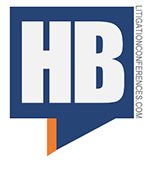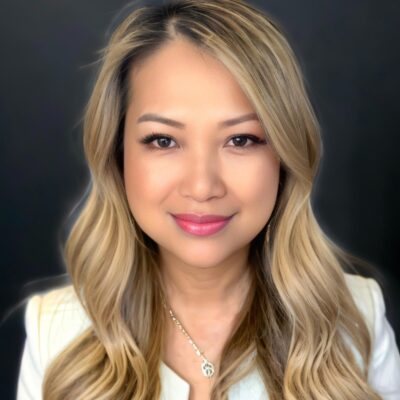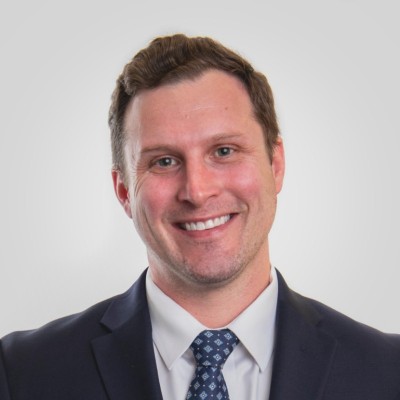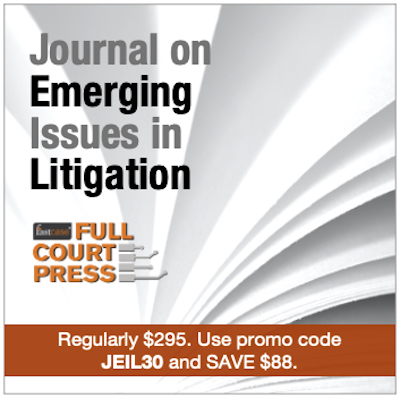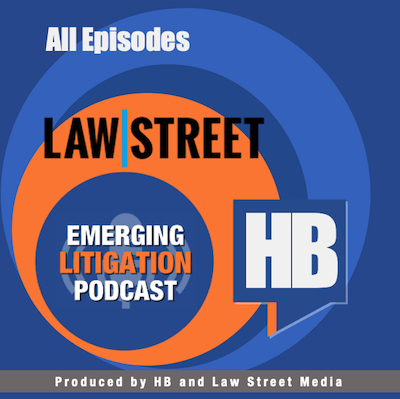Cracking the College Sports “Cartel”:
Good for Athletes, Competition, and the Games
Time will show that amateurism is not what fills stadiums.
Editor’s Note: This article will appear in the spring issue of the Journal on Emerging Issues in Litigation, published by Fastcase Full Court Press. Download a pre-publication copy now. Thanks to California Sports Lawyer Jeremy Evans for his valuable contributions to this article.
Alston Opinion Changed Everything
In NCAA v. Alston, 141 S. Ct. 2141 (2021), the Supreme Court upheld a district court and subsequent affirmation by the Ninth Circuit Court of Appeals in favor of players. The National Collegiate Athletic Association (NCAA) rules limiting education-related compensation violated Section 1 of the Sherman Act, the high court affirmed. Just days later, the NCAA announced interim measures allowing name, image, and likeness (NIL)–related benefits. It continued to restrict non-educational compensation, however. Left intact were bans on pay-for-play arrangements and inducements to influence a student’s choice of schools. The athletes did not challenge the remaining rules, but the Supreme Court’s decision, combined with the principles of antitrust law, opened the door to further efforts to overturn bans on compensation unrelated to education, which we are seeing.
Before Alston, there was a string of NCAA cases before California federal courts challenging its long-standing amateurism rules. Most had reached some form of the following conclusions:
- If compensation distorts the amateur-professional distinction, then the NCAA has a procompetitive justification in restricting it because demand for NCAA sports is based on the amateur status of the players.
- If compensation is tied to the cost of attending school or an education-related benefit, then it does not threaten the amateur-professional distinction and the NCAA lacks a pro-competitive justification for restricting it.
The Ninth Circuit found in its Alston ruling that the student athletes established that the NCAA rules produced significant anticompetitive effects within the relevant market for their labor. It then considered the NCAA’s procompetitive justification for the rules—that demand for college sports is based on the amateur status of the athletes and the rules preserve that tradition. Relying on market-demand experts, consumer survey evidence, and testimony from NCAA officials, the panel held the NCAA had a procompetitive justification to prohibit unfettered student athlete compensation but not non-cash education-related benefits. The court permitted the latter category because it would not alter the amateur-professional distinction of the student athletes. Alston v. NCAA (In re NCAA Ath. Grant-In-Aid Cap Antitrust Litig.), 958 F.3d 1239 (9th Cir. 2020)
“Cartel of Buyers Acting in Concert”
In a concurring opinion, Judge Milan Smith described the NCAA as a “cartel of buyers acting in concert to artificially depress the price that sellers could otherwise receive for their services.” The NCAA’s rules, the judge commented, deprived young athletes “the fundamental protections that our antitrust laws were meant to provide them.”
The Supreme Court affirmed. Writing for the court, Justice Neil Gorsuch agreed with the district judge that the NCAA and its member schools are commercial enterprises governed by the Sherman Act. In applying the rule of reason test, he agreed with the NCAA that “antitrust law does not require businesses to use anything like the least restrictive means of achieving legitimate business purposes.” However, Gorsuch found the district court’s analysis in line with antitrust law.
Justice Brett Kavanaugh concurred, saying the NCAA’s restrictions on non-education-related compensation left serious antitrust questions unanswered. “Businesses like the NCAA cannot avoid the consequences of price-fixing labor by incorporating price-fixed labor into the definition of the product,” he wrote, adding, “Nowhere else in America can businesses get away with agreeing not to pay their workers a fair market rate on the theory that their product is defined by not paying their workers a fair market rate.”
From Nil to NIL: Does Amateurism Really Drive Demand for NCAA Sports?
Opponents to NIL deals claim amateurism is what fills seats; people cram themselves into stadiums not because players earn financial rewards, but because of their passion for competition.
As in O’Bannon v. NCAA (O’Bannon II), 802 F.3d 1049 (9th Cir. 2015), the Ninth Circuit in Alston v. NCAA focused on whether different forms of compensation impair the amateur-professional distinction. Critics challenge the notion that this distinction drives demand for college sports, and they have a point. In fact, games often become more popular after amateurs go pro. The Olympic Games, once hailed as the apotheosis of amateur competition, requires only wrestlers to compete without compensation. The popularity of the Games surged after professionals were permitted to compete. Golf followed a similar transformation.
NIL proponents also argue that the quality of NCAA sports (i.e., the product) would improve if student-athletes were compensated. Top players often leave college early to turn professional; many would rather stay in school if they could afford it. At least some players, if compensated, would play additional seasons in college and delay advancing to the NBA. This is particularly true in college basketball, where top recruits increasingly skip college to get paid overseas or in the NBA’s developmental league.
In its review of Alston v. NCAA, the Supreme Court noted the NCAA’s advocacy for amateurism as it describes the term. But, as the district court found in its opinion—In re NCAA Ath. Grant-In- Aid Cap Antitrust Litig., 375 F. Supp. 3d 1058 (N.D. Cal. 2019)—the NCAA never had a consistent definition of the concept; in fact, it shifted “markedly” over time. Nor did the NCAA refer to “considerations of consumer demand” in defining the word. “None of this is product redesign;” Justice Gorsuch wrote, “it is a straightforward application of the rule of reason.”
The ultimate test of whether amateurism drives demand will come after new state laws allow compensation unrelated to education. If compensation doesn’t trigger a drop in demand, the NCAA will lose its procompetitive justification for the restriction and likely bring an end to amateurism rules.
Momentum is clearly swinging in favor of college players in general, as additional guidance comes from states about implementing NIL policies and from judges as they encounter new arguments from athletes.
Antitrust Class Action Certified in California
On Nov. 3, 2023, U.S. District Judge Claudia Wilken of the Northern District of California, certified three classes of college athletes in their suit for antitrust damages (In Re College Athlete NIL Litigation, N.D. Calif.) In addition to being required to end its restraints, NCAA could face monetary damages based on payments college athletes would have received from broadcasts, video games, and other sources had they not be restricted. The plaintiffs demonstrated that issues of antitrust injury and damages could be resolved with common proof via class action, the judge determined. Further, she wrote that there is no dispute that the central question of whether the challenged rules violate Section 1 can also be resolved on a class-wide basis. With that, the court found the players showed that the predominance requirement of Rule 23(b)(3) was met with respect to the proposed damages classes.
In their unsuccessful request for an interlocutory appeal to the Ninth Circuit, the NCAA and the “Power Five” college conferences said that if the players were to win the case, the organizations would suffer catastrophic damages – a “death knell” – for denying players a share of revenues and opportunities. They said they would be forced to settle even if they believe the players are wrong.
Interestingly, the NCCA and the Power Five cited comments made by a leading beneficiary of NIL deals, University of Southern California quarterback Caleb Williams. The 2022 Heisman Trophy winner questioned why video game giant Electronic Arts was going to pay football players all the same flat $500 fee to appear in one of its games. Williams told Yahoo Sports: “It’s like if you go to school and you are a straight-A student and there’s another kid whose strong suit isn’t school, and he gets B’s or B-minuses. How fair would it be if you get the same grade as him? That never works in school, and it doesn’t make sense.”
The NCCA used Williams’ remarks to support their position that star athletes would suffer if lumped into a class with average players, as opposed to allowing them to pursue individual litigation. The appeals court denied review on Jan. 18.
On one hand, the chasm in compensation between stars and non-stars is nothing new in sports, or any field for that matter; on the other hand, it’s easy for a top-level quarterback to say, and downplays the contributions his teammates have made to his success.
Antitrust Class Action Filed in Colorado
Totaling the many billions of dollars generated by television broadcasts, the named plaintiff – former University of Colorado football player Alex Fontenot – says athletes “get nothing” even though they are “the most significant driver of that revenue.” To claim that amateurism is the main attraction is a “sham argument,” he says in a proposed class action filed against the NCAA and five conferences in federal court in Denver (Alex Fontenot v. NCAA, et al., No. 1:23-cv-03076, D. Colo.).
“Defendants are operating a cartel that fixes wages—a classic antitrust violation,” the complaint reads. “The NCAA’s members (which includes its schools and conferences) are horizontal competitors. In a competitive market, they would compete for players by providing them with salaries commensurate with the true value of their labor. That competition would lead to the athletes receiving a significant share of revenue, including the television revenue from these media agreements. Athletes in other leagues (such as in European soccer leagues, the National Football League, and the National Basketball Association) regularly receive 50-60% of revenue.”
“Many of these athletes are from disadvantaged backgrounds,” the complaint explains. “They have only a limited window to earn money based on their athletic talents, and they risk serious injury to compete in the sports that they, and fans, love. Only a small percentage of the athletes in the labor market at issue will ever play in the NFL, NBA, or WNBA, so for many of these athletes, college is their only chance to be compensated for their athletics skills. The NCAA’s rules have inflicted very serious and very great harm on the thousands of athletes that work so hard to make the NCAA’s product possible.”
Filed Nov. 20, 2023, the complaint cites violations of Sections 1 and 2 of the Sherman Act. It seeks treble damages and a jury trial.
Legislation
Since NIL was unleashed on a sports-loving nation, more than half the states enacted NIL laws, fencing in the practice to varying degrees to avoid potentially unfavorable consequences. Other states and Congress are considering the issue, as well.
Florida
Florida was among the first NIL states and just two years later had already changed the law. The Sunshine State’s HB 7-B was enacted on Feb. 16, 2023, repealing and replacing its 2021 law which required NIL deals with student athletes to be facilitated by third parties – not universities. Now, Florida school officials may introduce and help broker NIL opportunities for players and prospects with third-party sponsors, boosters, and collectives. HB 7-B also requires universities and colleges to conduct financial literacy, life skills, and entrepreneurship workshops for players as part of receiving NIL-generated profits.
One provision that remains in effect in Florida, however, is that universities may not use NIL as a recruitment or inducement tool, something that concerns the NCAA, universities, and college athletes. To mitigate the risk of abuse, NCAA leadership must develop anti-corruption policies and procedures, and address compliance, monitoring, education, conference parity, and fairness concerns.
In the category of unexpected consequences, potential harm could come to those who lead NIL college teams on the playing field. Coaches make various decisions about their players. They determine how much athletes play and whether to bench or suspend them – decisions that could adversely impact their financial prospects. The new Florida law protects coaches from potential liability claims. This is sound policy, but it raises a question about NIL deals when connected to performance and pay-for-play. A traditional NIL pulls from three buckets: (1) money, (2) product, and/or (3) equity for the services of social media posting, advertising, endorsing, or consulting, or some similar activity or job. However, there have been questions raised during the anything-goes era of NIL contracts, in which they can be connected to performance, playing time, or whether a college athlete is playing for a certain university. As long as NIL deals are allowed, these issues will have to be addressed by the NCAA, universities, and legislatures.
California
In the first state to author NIL legislation, the California legislature is considering whether to pay college athletes more money unrelated to free market NIL payments from university television revenue or an athletic department surplus (e.g., 50% into a college fund). In addition, any payments would have to be made according to Title IX rules (e.g., equal payments to all student athletes regardless of sport profit or gender). There is also a proposed college athlete “bill of rights” and one provision that supports graduation and education. If the legislation passes (such measures have failed before) universities may look for ways to spend the money to avoid a surplus. As we’ve made clear, the surpluses can be enormous. UCLA and USC left the Pac-12 for the Big Ten to gain $40-60 million in additional television revenue each year.
The draft legislation in California also states that employment is not to be assumed by any guaranteed payments. However, guaranteed payments in legislation for college athletes would support an argument that an employee-employment relationship exists, especially given California’s definition of independent contractors and when compared to professional athletes. An employment misclassification dispute could lead to expensive litigation against universities.
National Solution?
Federal legislators are also paying attention to the issue. In the summer of 2023, Sen. Richard Blumenthal co-sponsored a bill that would create a national NIL standard, as did Sens. Joe Manchin and Tommy Tuberville, and Rep. Gus Bilirakis. Sen. Chris Murphy and Rep. Lori Trahan (a former Division I volleyball player) proposed a bill that would allow international student-athletes to engage in NIL activity without losing their student visa status. That bill is also designed to encourage negotiation between athletes and their colleges for the use of athletes’ NIL for promotion and media rights deals, and ensure colleges and collectives do not discriminate based on gender, race, or participating sports when facilitating NIL deals.
The NCAA and colleges have called for a federal standard. But, after a hearing this month on Bilirakis’ proposals, Rep. Trahan told Steve Berkowitz of USA Today, “It’s hard to imagine in this Congress, getting to an agreement on an antitrust exemption — on employment … That’s not going to pass both chambers and … Democrats and Republicans won’t come together on that one.”
The Competition Cash Cow
Looking back, we find it interesting that the only amateurs in the “college sports industry” – which generates billions of dollars in revenue and pays many thousands of salaries – seemed to be the players themselves. Everyone from coaches to broadcasters to hotdog vendors are compensated. Even cheerleaders and marching band musicians have been free to negotiate NIL deals.
It seems odd to refer to college sports as an industry, but the label is warranted. According to the NCAA, Division I athletics generated $15.8 billion in 2019 from ticket sales, media rights, licensing, and donations. The Knight Commission on Intercollegiate Athletics estimates that in 2020, Division I and Division II athletics generated $21 billion. The industry also supports employment, raises tax revenue, and boosts local economies. The Knight Commission estimates that college sports generated more than 700,000 jobs and contributed $74 billion to the 2020 U.S. economy, which is about $230 per American.
Lifting the ban is something pro-NIL groups advocated for years, just as fervently as anti-NIL forces feared it would ruin the concept of amateurism.
Those arguing in favor of allowing players to profit from NIL have done so on the basis of fairness, empowerment, and economic opportunity for students. They asked: Why shouldn’t college athletes be rewarded for the value of their images? Why shouldn’t they have more control over their own finances and career opportunities? Permitting NIL deals offers them new economic opportunities, which are particularly meaningful to lower-income students. Of course, NIL deals help schools attract and retain top athletic talent, which further fuels the competition cash cow.
In addition to claiming amateurism has always been the main attraction of college sports, opponents argue that allowing NIL deals will further commercialize the events, give an unfair advantage to wealthier schools, and lead to the exploitation of college athletes. While commercialization isn’t inherently a bad thing, the latter two concerns will have to be addressed.
Contributing to this article was Jeremy Evans (jeremy@csllegal.com), CEO, Founder, and Managing Attorney of California Sports Lawyer®. Evans writes a weekly column and hosts the California Sports Lawyer® Podcast with Jeremy Evans.
